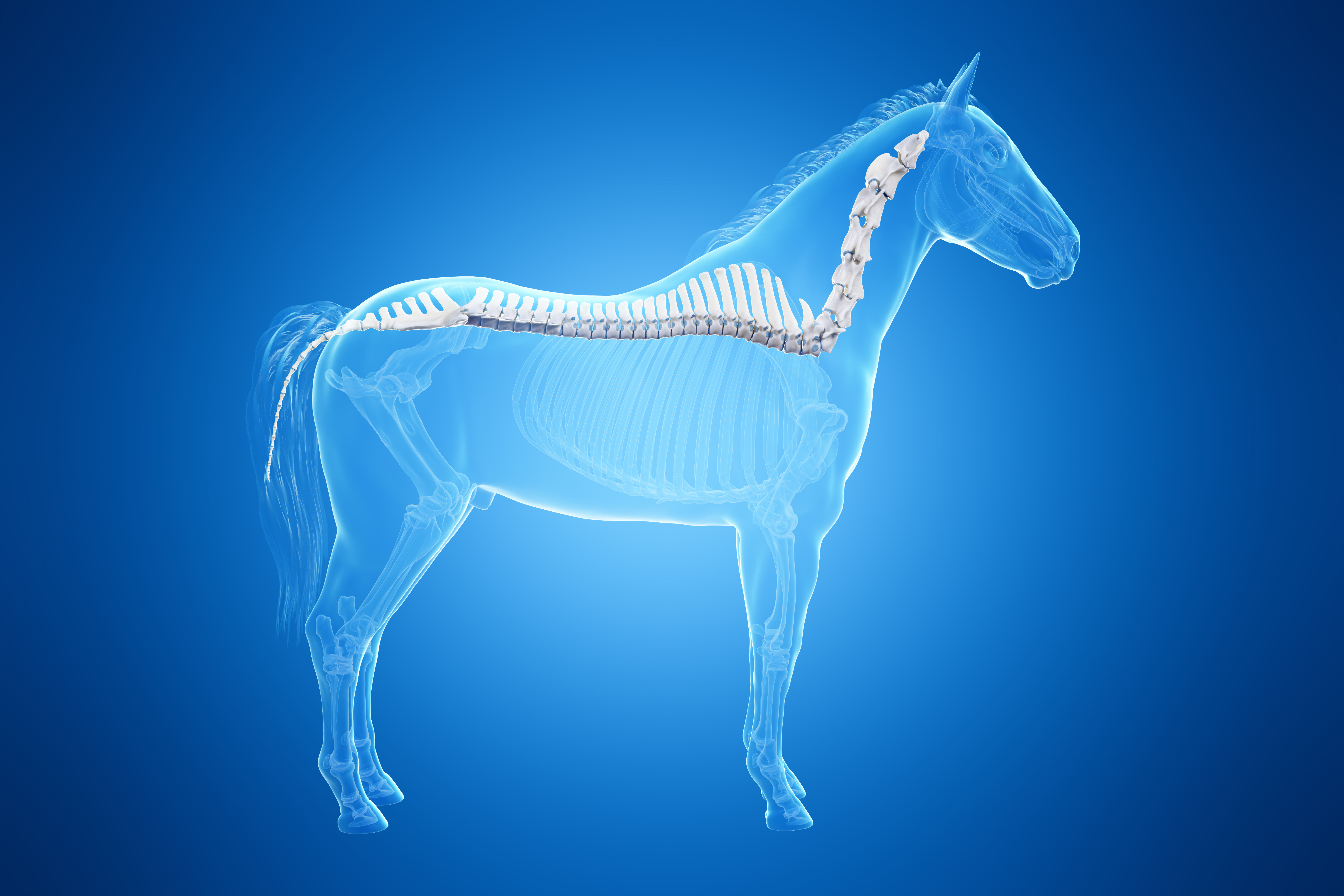Home > Horse Care > Susceptibility to “kissing spines” in horses may be genetic
Susceptibility to “kissing spines” in horses may be genetic
- December 18, 2024
- ⎯ Christine Barakat
A preliminary investigation suggests that some horses may inherit a tendency to develop the condition commonly called kissing spines.
Technically known as overriding spinous processes, kissing spines refers to closely spaced bony prominences (spinous processes) at the top of vertebrae that touch or rub against each other as the horse bends and moves. The resulting discomfort can lead to performance problems including bucking and/or an unwillingness to flex in a particular direction or hold a lead at the canter.

A kissing spines diagnosis is typically based on the horse’s clinical history and radiographs of the spinous processes, although the clinical relevance of the imaging findings can be difficult to interpret. Treatments involve a combination of corticosteroid injections, mesotherapy, shockwave therapy, and muscle relaxants as well as physical therapy. In severe cases, surgery may be performed to cut the ligaments connecting the spinous processes or remove a portion of the bone so the spinous processes cannot touch.
Beau Whitaker, DVM, of Brazos Valley Equine Hospital in Texas, was the organizing researcher of the study, which was presented at the American Association of Equine Practitioners 2020 virtual convention this month. Whitaker, who was part of a team assembled by Etalon Diagnostics, analyzed the phenotypic data and kissing spine grades of 220 Warmbloods, Quarter Horses and Thoroughbreds referred to private equine clinics around the country for back pain and diagnosed as having kissing spines based on radiographs and clinical signs.
Click here to learn the subtle signs of back pain in horses.
Initially, veterinary records and radiographs for each horse were collected and the radiographs were graded on a scale of 1 (slight narrowing of spaces between the spinous processes) to 4 (extensive overlap and bony remodeling of the processes) by an independent observer. Then the hair samples underwent genetic analysis.
Finally, the genetically mapped samples from the study horses were matched and compared to genotypes of 50 control horses not known to have kissing spines. Out of about 50,000 locations on the chromosomes examined, the data showed that a single gene location was associated with a kissing spines diagnosis. Specifically, an allele (one half of pair of two inherited genes) at that location correlated with a 4-and-half greater likelihood to have kissing spines.
“That was a very large effect size, and quite a surprising finding,” says Samantha Brooks, PhD, of the University of Florida Genetics Institute, who helped interpret the study data. But, she adds, estimates of heritability based on pedigrees tend to be high, suggesting this isn’t the only allele involved. The researchers are continuing their work to determine other loci that may be involved, which may vary from breed to breed and even among types of horse within the breeds.
From the analysis, other interesting statistical patterns emerged, says Brooks. For instance, sex and age had no significant bearing on the risk of kissing spines but height did. “Height increases of about one hand is [statistically] the difference between a horse without kissing spines and a horse with,” she says. This may be related to structural forces on the spine itself or “this may be because tall breeds of horses also tend to carry the kissing spines allele.” Brooks adds that they’ve also found evidence of two other loci associated with the severity of kissing spines, and these are the subject of further study.
Is posting easier on a horse’s back? Click here for the expert answer.
All of this points to a strong genetic component to kissing spines, which would be worth noting when considering using a horse whose performance has been limited by the condition for breeding, says Brooks. The researchers are also currently developing models to help identify horses at risk for kissing spines so they may undergo early intervention with therapeutics or may be directed to less strenuous careers.
Reference: “Identification of genomic loci associated with performance-limiting kissing spines in Quarter Horses and Warmbloods,” American Association of Equine Practitioners Convention Proceedings, December 2020
Don’t miss out! With the free weekly EQUUS newsletter, you’ll get the latest horse health information delivered right to your in basket! If you’re not already receiving the EQUUS newsletter, click here to sign up. It’s *free*!





